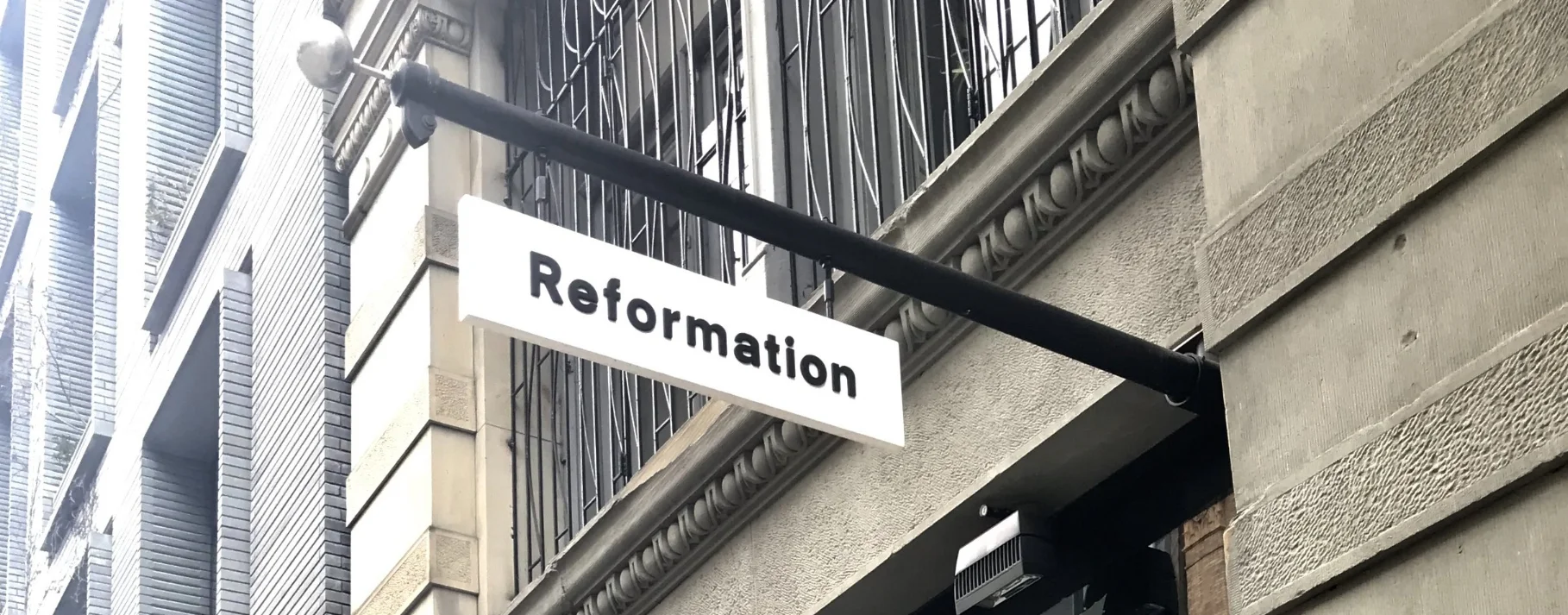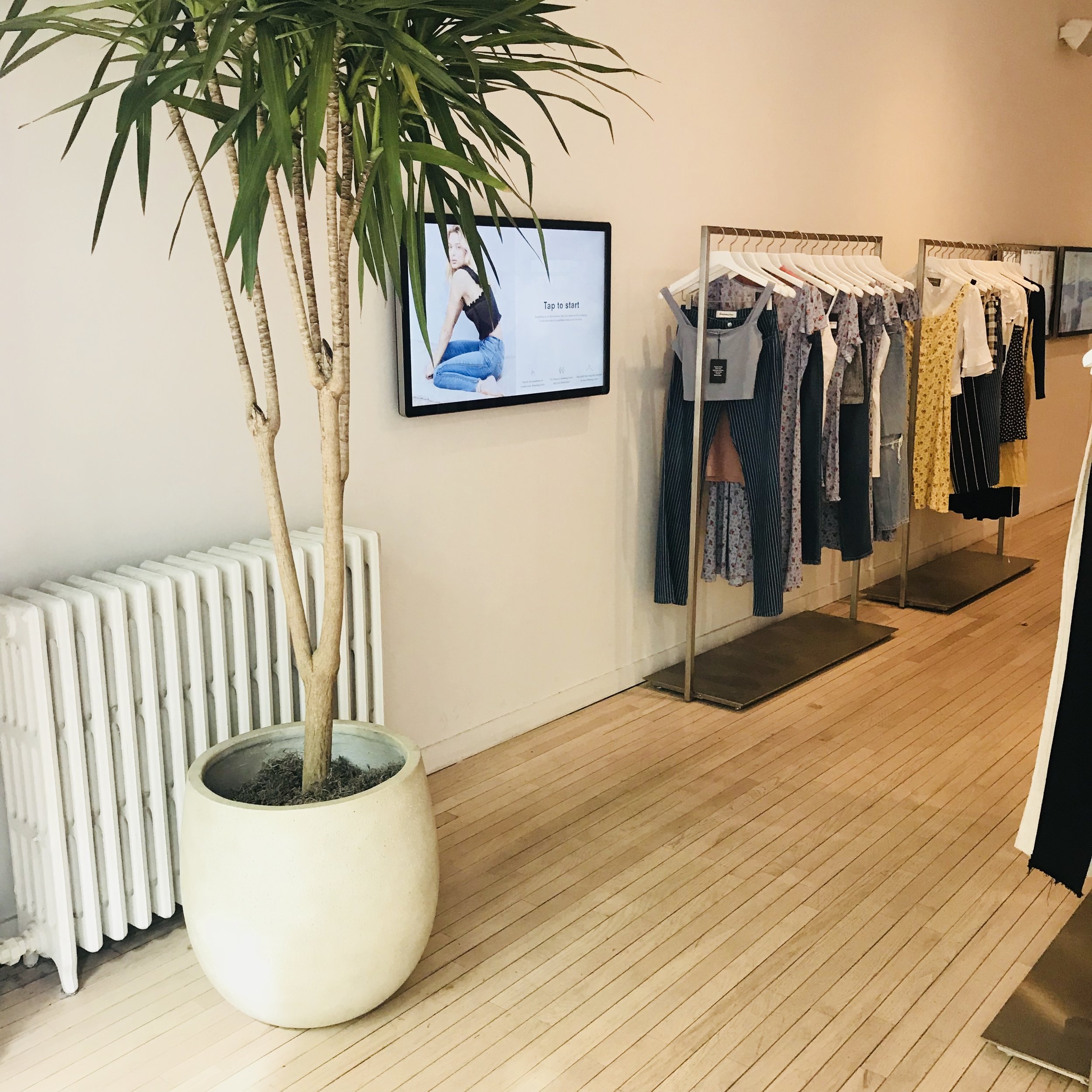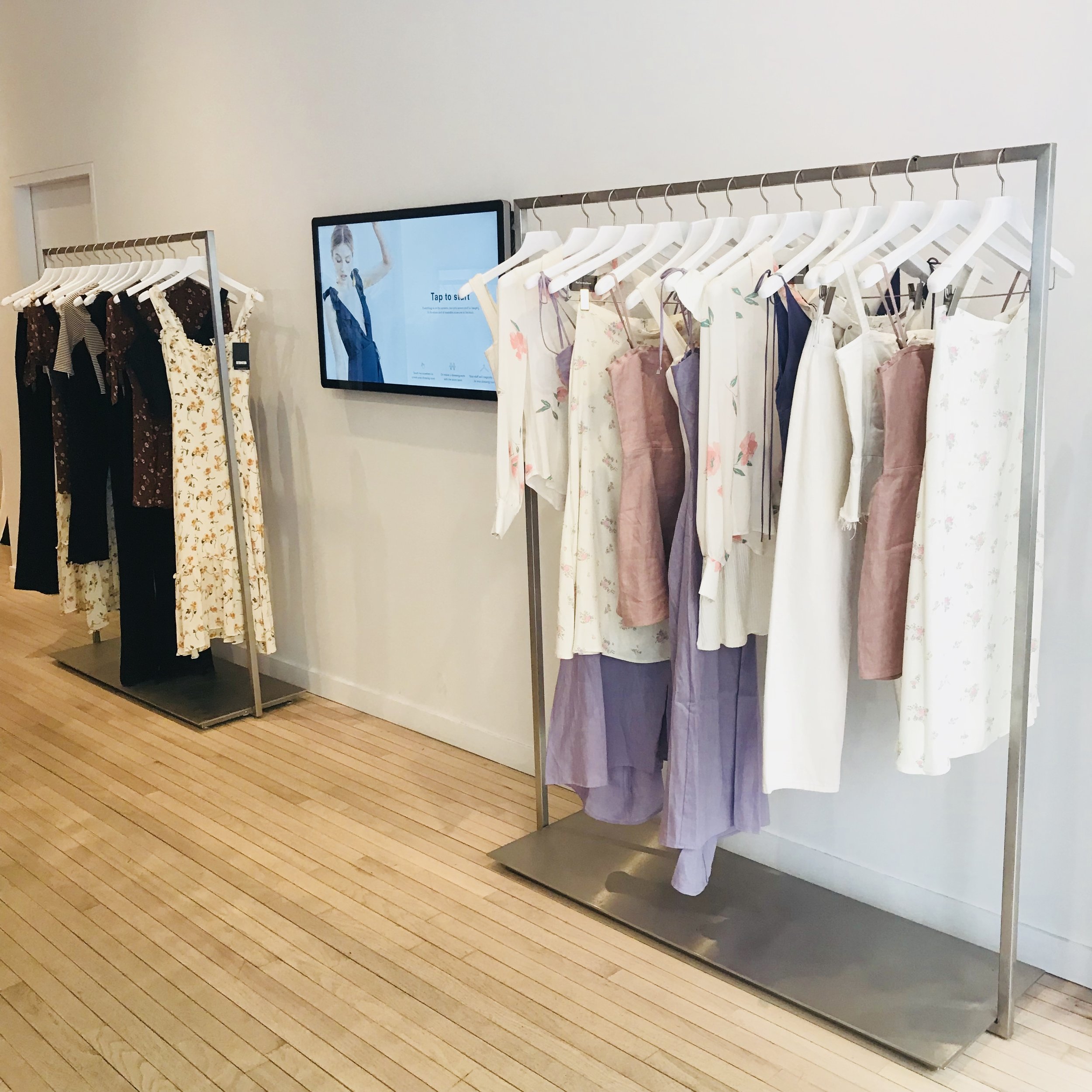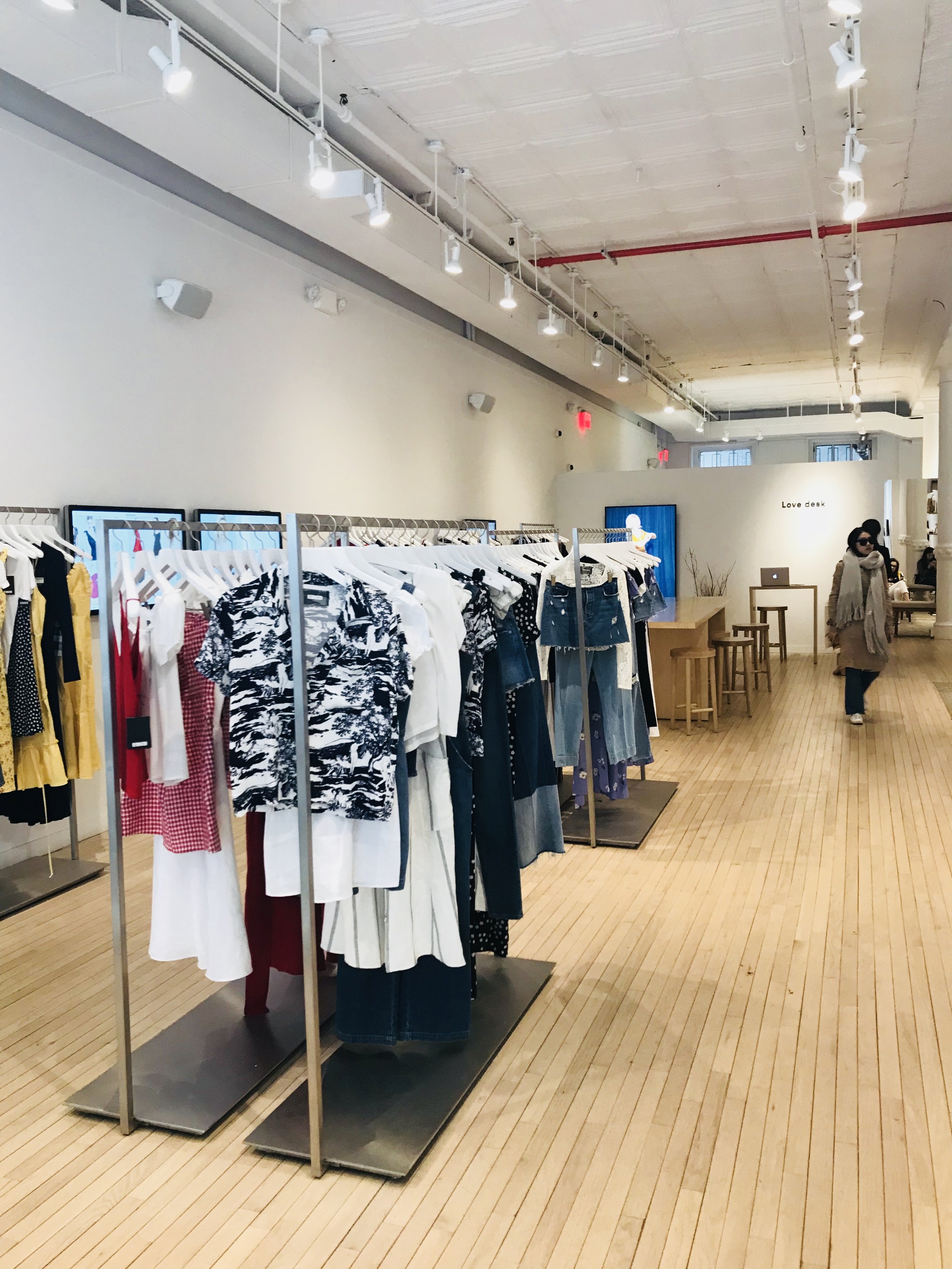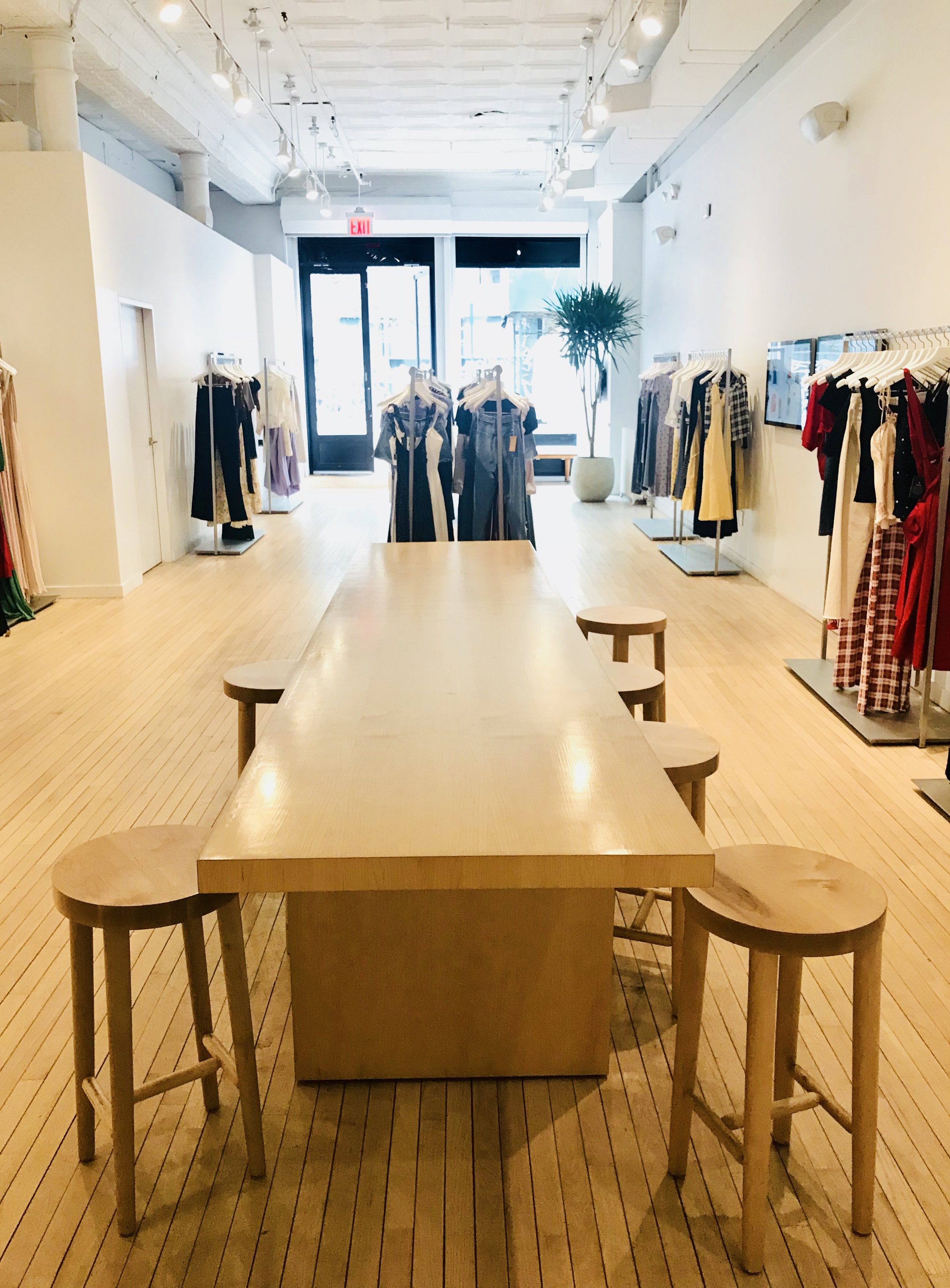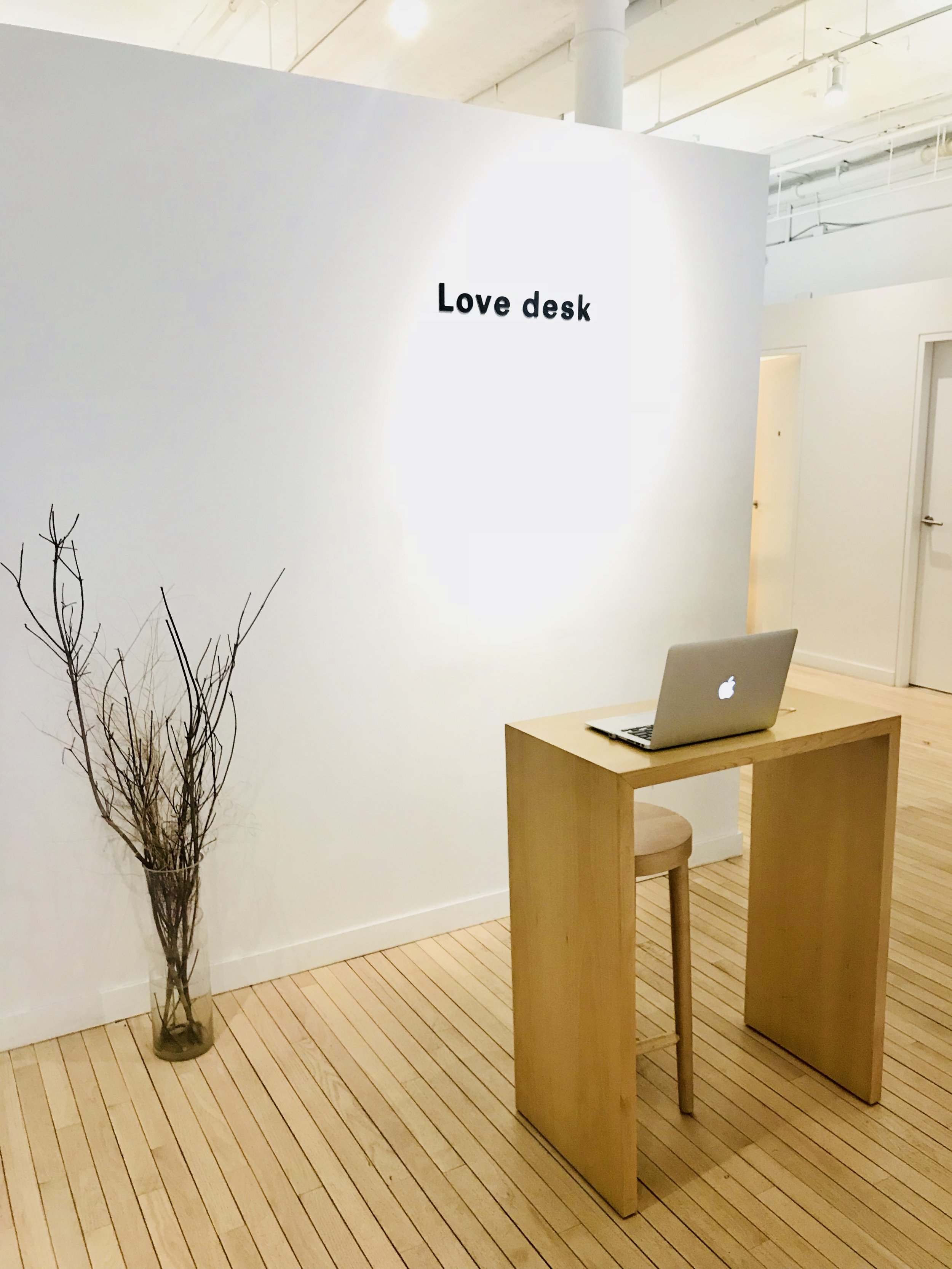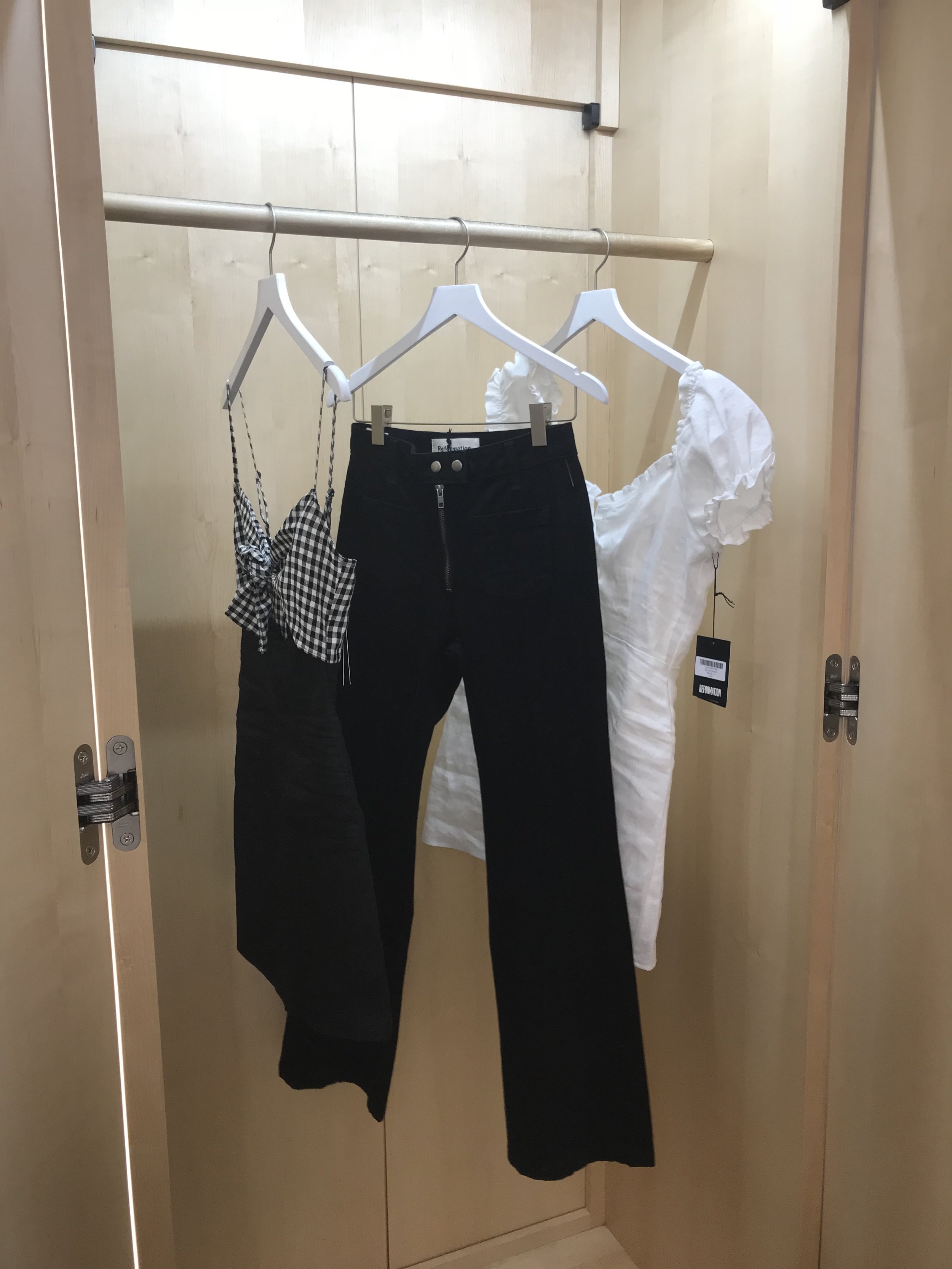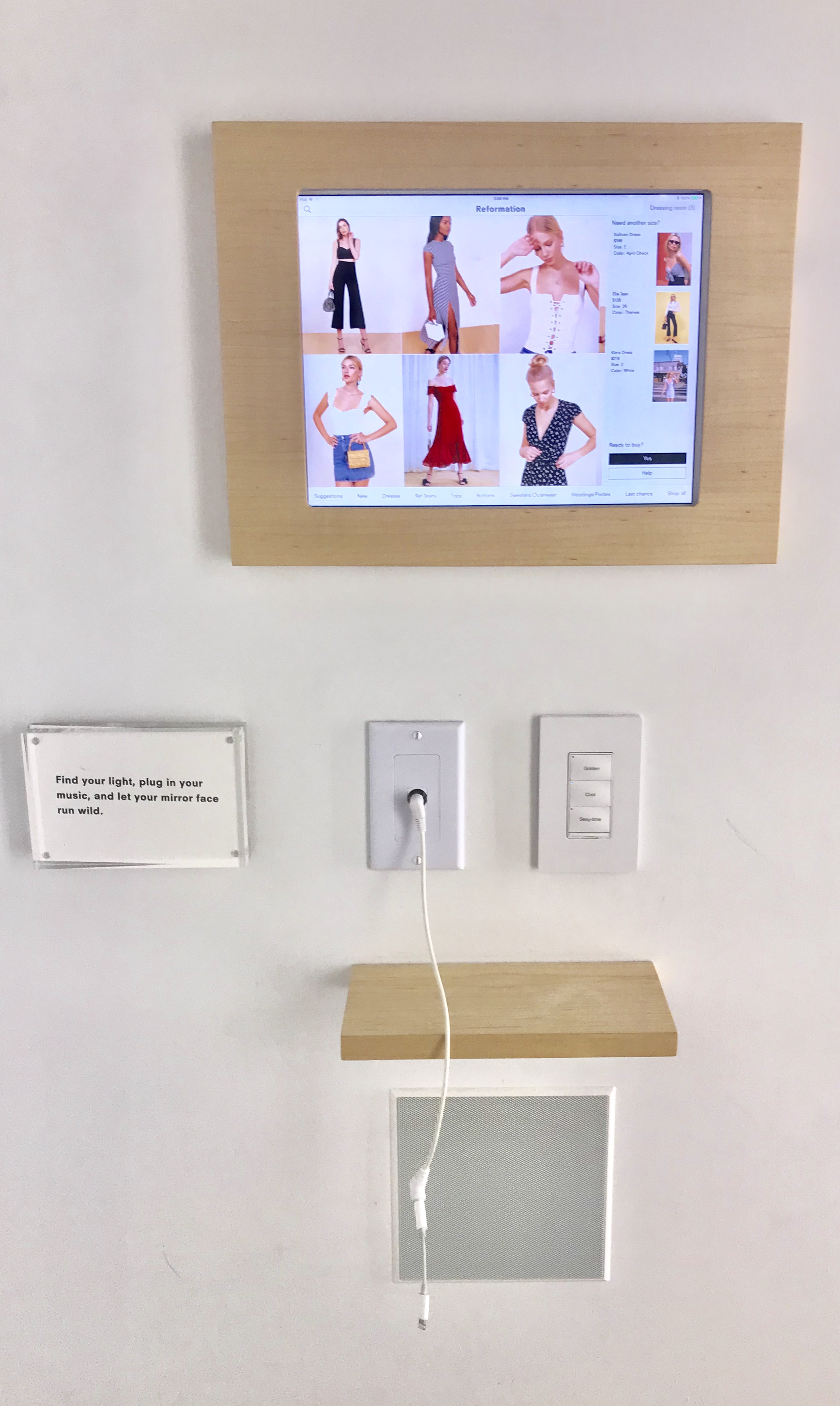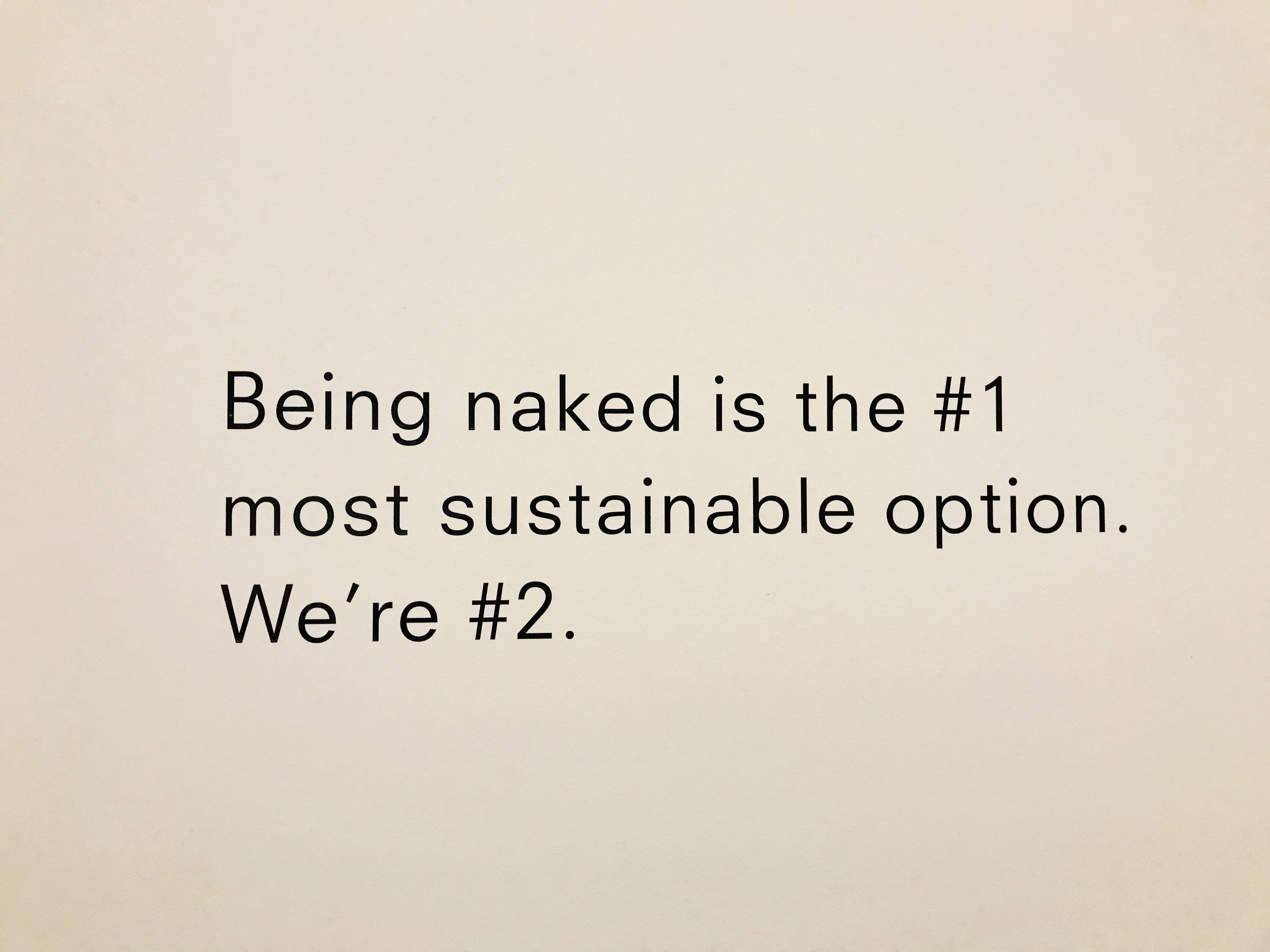Over the next couple posts, we’ll be discussing the impact of technology in retail stores. More specifically, we’ll consider how formerly ecommerce-only companies have integrated technology into their brick-and-mortar locations.
This week, retail guru Olivia Horvath explored the womenswear company Reformation’s high-tech space in New York’s East Village.
A “Cool Girl” Aesthetic That’s Good for Planet Earth
This LA-based line was launched in 2009 starting with an ecommerce site. The brand was intent on making feminine and effortless pieces while focusing on sustainability. They developed a customer base with their on-trend pieces made from deadstock fabric, sustainably sourced material, and repurposed vintage clothes. Moderately priced pieces and buy-now-wear-now fashion rendered this brand accessible to the masses.
Reformation also appealed to socially-conscious young women — their target demographic — by sending updates via email about how they reduce waste from sketch to production. This marketing tactic instilled confidence in environmentally-conscious consumers. Reformation was providing added value, convincing customers that by shopping with them, they could have the wardrobe they craved while decreasing water usage and their own carbon footprint.
Of course, without great pieces, Reformation would just be another green startup. Yes, this environmentally conscious business model has helped their image, but it is Reformation’s “cool girl” aesthetic that has sealed their success amongst young, bicoastal women.
Currently, Reformation has three retail locations in downtown New York City (LES, Soho, Bond Street), four in California, and one in Texas. 80% of their sales still come from their website, but rerouting how technology influences customer experience in-store is driving more and more customers to their brick-and-mortar locations.
In late 2017, Reformation’s updated their retail stores with cutting-edge technology — especially their Bond Street location. Their goal: to make a high volume store function seamlessly by bridging the gap between shopping Reformation online and in-store.
In-Store Millennial Minimalism Showcases Tech
From my past experiences at the SoHo location, I’ve found that Reformation is one of the few companies dedicated to making sure their branding and customer service go hand-in-hand. This approach creates a well-rounded in-store experience. I was intrigued to see how their well-curated branding might be affected by the high-tech updates.
First off, the overall vibe of the Bond Street store is a bit more uptight and cold than the Soho location, but it does feel higher-end. Bond Street — a cobblestone off-street between Lafayette and Bowery — is a-tucked away hidden gem, lined with boutique hotels and restaurants. When walking up to the store on the brick-adorned street, it seems like you’re approaching a gallery space.
Upon entrance, the well-lit and spacious venue feels like a factory-turned-curated-showroom. There is minimalist design, tall ceilings, white-washed walls, bare wood floors, and muted music. The only accent pieces are the tech updates like large touchpad displays and the occasional, California-cool succulent plant.
To the left of the entry way, there is a large touch pad display to greet you — not an actual person. With this technology, you can pick pieces from Reformation’s stock and build your own dressing room. This iPad is not intimidating; it’s much like shopping on their website. Instead of browsing the space for clothing, I perused the collection online, considering a style first and then selecting my size and color preferences. The process of shopping in-store with a tablet felt natural immediately.
A Game-Changing, Unforgettable Magic Wardrobe
After customers build their own personalized dressing room, they’re advised to check-in at the “love desk”. Here, customers will most likely have their first interaction with a store associate. While the associates are there to check customers in, they were adjunct to the user-friendly devices. Once checked-in, customers can relax in the lounge or browse Reformation’s edited section of third-party accessories.
After a short wait, associates call customers by name and guide them to their fitting rooms, where your wardrobe is awaiting you. Inside, you’ll see your selection of pieces have appeared magically, thanks to a false back in the fitting room that leads to the stock area.
While in the fitting room, you can have a truly personalized experience. There is a smaller touch screen where you can add more sizes/items, plug your phone in and play music, and create your own mood lighting.
Every avid shopper knows lighting in the fitting room is key to confidence while trying on new clothes. At Reformation, customers can choose from three different lighting options: golden, cool, or sexy time. This was one of the first dressing rooms that I didn’t want to rush out of. It felt luxurious and intimate. I felt free to take my time, take selfies, and ask employees and friends for their advice. I almost felt like Cher Horowitz in Clueless with my own virtual, intelligent closet.
Once customers finish up in these hard-to-leave fitting rooms, it’s time to checkout. Shoppers simply bring items to the aforementioned love desk and check out via portable tech with cash or credit.
Customer Service That Needs to Catch up to Tech
While I enjoyed the novelty of the magic wardrobe, what I was left desiring was a more positive experience with the sales staff. Reformation Bond Street is great for those days when I’m craving the least amount of human interaction possible. I got this feeling that more training was needed for the associates to feel comfortable not only with the new tech, but also with classic customer rapport.
For example, while at the love desk, the staff exuded annoyance when I asked if I could check out. To me, a truly high-end shopping experience would require the staff to treat shoppers as well as the tech does. The last impression a store can leave is during check out and the goodbye. This quick interaction nearly diverted my overall positive experience.
Reformation can improve upon their tech-based customer experience by syncing customers’ online profiles with their in-store purchases. That way, the customer profile can be more readily available to staff, creating an even more personalized experience.
Also, while the company is quite visible with their quarterly sustainability reports online, their environmentally-friendly business model feels secondary when in-store. Their motto, displayed demurely throughout the store, reads: “Being naked is the #1 most sustainable option. We’re #2.” But there is no reference to what the slogan means. That’s a missed opportunity.
Reformation Isn’t Perfect — But It’s Well-Worth the Trip
I truly enjoyed the convenience and functionality of the tech at the Bond Street store. Like shopping online, their devices were user-friendly and allow customers to control their own experiences. There’s even an upside to the lack of staff engagement: no one pushes the customer to try on a size or style she’s not comfortable with. The staff is there not to make a sale but to assist in the Reformation experience.
Ultimately, I’d prefer to keep shopping Reformation online. But if I feel I need to try a specific style on for fit or quality, then Bond Street will be my destination. While the whole experience is not perfect, I’ll take any excuse to indulge in Reformation’s magic wardrobe one more time.

